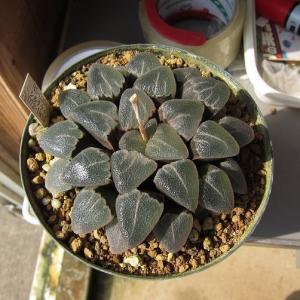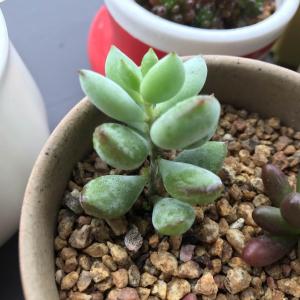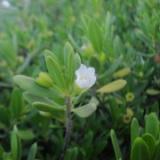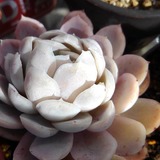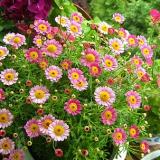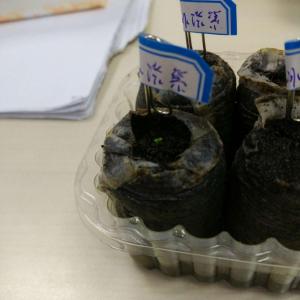文章
小马奥
2017年02月22日

Not only the #vegetables but #fruits can be grown in pots too. Here are 14 best fruits to #grow in pots.
Buy a disease free potted plant from a reputed nursery or online and start in a small to medium sized pot (3-5 gallons) and then repot the plant gradually into the bigger ones. A 20-25 gallon size pot is an ideal one for a fruit tree in the container.
Best Fruits To Grow In Pots1. Lemon

USDA Zones— 8-11, *can be grown in cooler zones with care in winter
Lemon trees have adapted themselves for container gardening. However, it is a tropical fruit but gardeners in cool temperate regions are also successfully growing this tangy and sour fruit in containers. Almost all the varieties are suitable but there are some that grows best in specific conditions. Read the information given in this article to grow your own lemon tree.
2. Strawberries

Strawberries are without a doubt one of the best fruits to grow in pots. The best about growing strawberries in containers is they are easy to grow, don’t require large pots or space and you can grow on your small urban balcony. You can also try to grow strawberries in tropics in winters. Check out our guide on growing strawberries here.
3. Apple

Dwarf apple trees are very suitable for growing in pots, you can even keep on a balcony or small terrace. When growing an apple tree in such a small space it would be better if you choose a self-fertile variety so that you don’t need to grow more than one plant. All the other requirements for growing apple tree in a pot is available here.
4. Pomegranate

*can be grown in cooler zones with care in winter
Pomegranate is one of the juiciest and healthiest fruits and perhaps the easiest to grow in pots because it has shallow root system when compared to other large fruit trees. If you’ve grown citrus in pot, growing pomegranates in containers can not be difficult for you too. Moreover, pomegranate is more cold hardy and easy to grow. Learn how to grow it in pot in this article.
5. Fig

0
As figs are most suitable for warm temperate regions (USDA Zones 8-10) it is best to grow a fig tree in a pot if you live in a climate where winters are harsh or you don’t have enough space. Choose an appropriate variety to grow in a pot and provide plenty of sun to your plant. Regular pruning and fertilization are necessary.
6. Nectarines and Peaches

Both the nectarines and peaches are available in dwarf varieties. Most of these dwarf varieties don’t exceed the height of 6-8 feet and are self-fertile. Some dwarf peach varieties are “Golden Gem”, “El Dorado”, “Garden Gold” and “Southern Sweet”. Dwarf nectarine varieties you can grow in pots are “Nectarcrest”, “Fantasia”.
7. Cherry

Bush cherry cultivars are suitable for container gardening. Cherries prefer a mild climate and a little water as it dislikes wet feet. However, drought and high temperatures could damage the plant as well, but it survives well in the cold. The cherry tree favors a soil that is well drained and composed of plenty of organic matter.
8. Guava

*can be grown in cooler zones with care in winter
Guava tree will delight you with its sweetly scented flowers, delicious fruits, and beautiful tropical appearance. Guava loves the sunny and warm exposure. It is a tropical plant but very much adaptable to temperate climates with moderate winter. Learn how you can grow guava tree in pot here.
9. Watermelon
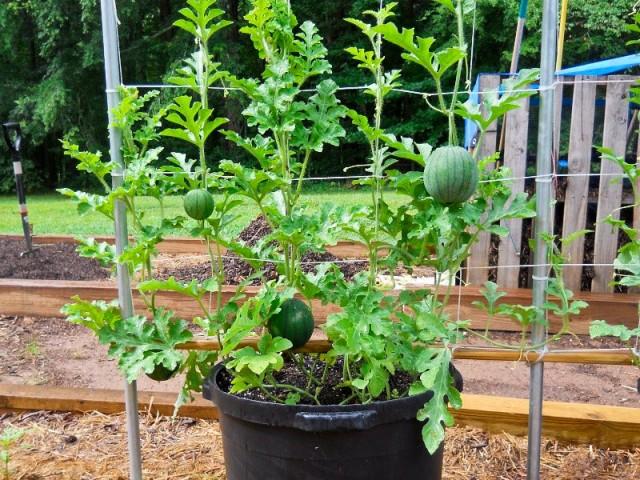
Watermelons are easy to grow in pots, all they need is a good support and well-drained potting soil. Growing watermelon is similar to cucumbers, you can find out all the information in our article.
10. Banana

Growing banana in a pot is easy and its lush green appearance can give any place a tropical look and feel. Banana trees grow in tropical and subtropical parts of the world and therefore they love full sun, heat and humidity. However, there are cultivars available that are mildly cold hardy and suitable for warm temperate zones. Find out how to grow it in a pot here.
11. Pineapple

Pineapple plants are small and compact and never grow more than 3-6 feet tall. Also, the plant has shallow roots when compared to other fruit bearing plants or trees that’s why it is possible to grow them in pots. However, pineapples require consistently warm and humid climate to thrive but you can also grow them as a houseplant in temperates, providing several hours of direct sunlight daily.
12. Raspberries

Raspberries are bit tricky and unruly to grow in containers but still everbearing varieties like “Heritage”, “Raspberry Shortcake” and “Fall Gold” are a good choice. All these varieties are self-fertile and easy to grow in pots. Here’s a useful article on growing raspberry in containers.
13. Blueberries

Growing blueberries in pots is a good idea if the soil in your garden is not acidic. Providing a potting mix for Azaleas and camellias or other acid loving plants and a large pot is essential so that your blueberry plant will grow easily and provide fruit for years.
14. Oranges and Citruses

All the oranges and citruses can be grown in pots as they are rather large shrubs or small trees. If you live in a climate where winters are mild these fruits are really easy to grow, however, you can still grow an orange tree in a cold climate with care in winter. In pots, you can grow calamondin, buddha’s hand citron, clementines orange etc.
Buy a disease free potted plant from a reputed nursery or online and start in a small to medium sized pot (3-5 gallons) and then repot the plant gradually into the bigger ones. A 20-25 gallon size pot is an ideal one for a fruit tree in the container.
Best Fruits To Grow In Pots1. Lemon

USDA Zones— 8-11, *can be grown in cooler zones with care in winter
Lemon trees have adapted themselves for container gardening. However, it is a tropical fruit but gardeners in cool temperate regions are also successfully growing this tangy and sour fruit in containers. Almost all the varieties are suitable but there are some that grows best in specific conditions. Read the information given in this article to grow your own lemon tree.
2. Strawberries

Strawberries are without a doubt one of the best fruits to grow in pots. The best about growing strawberries in containers is they are easy to grow, don’t require large pots or space and you can grow on your small urban balcony. You can also try to grow strawberries in tropics in winters. Check out our guide on growing strawberries here.
3. Apple

Dwarf apple trees are very suitable for growing in pots, you can even keep on a balcony or small terrace. When growing an apple tree in such a small space it would be better if you choose a self-fertile variety so that you don’t need to grow more than one plant. All the other requirements for growing apple tree in a pot is available here.
4. Pomegranate

*can be grown in cooler zones with care in winter
Pomegranate is one of the juiciest and healthiest fruits and perhaps the easiest to grow in pots because it has shallow root system when compared to other large fruit trees. If you’ve grown citrus in pot, growing pomegranates in containers can not be difficult for you too. Moreover, pomegranate is more cold hardy and easy to grow. Learn how to grow it in pot in this article.
5. Fig

0
As figs are most suitable for warm temperate regions (USDA Zones 8-10) it is best to grow a fig tree in a pot if you live in a climate where winters are harsh or you don’t have enough space. Choose an appropriate variety to grow in a pot and provide plenty of sun to your plant. Regular pruning and fertilization are necessary.
6. Nectarines and Peaches

Both the nectarines and peaches are available in dwarf varieties. Most of these dwarf varieties don’t exceed the height of 6-8 feet and are self-fertile. Some dwarf peach varieties are “Golden Gem”, “El Dorado”, “Garden Gold” and “Southern Sweet”. Dwarf nectarine varieties you can grow in pots are “Nectarcrest”, “Fantasia”.
7. Cherry

Bush cherry cultivars are suitable for container gardening. Cherries prefer a mild climate and a little water as it dislikes wet feet. However, drought and high temperatures could damage the plant as well, but it survives well in the cold. The cherry tree favors a soil that is well drained and composed of plenty of organic matter.
8. Guava

*can be grown in cooler zones with care in winter
Guava tree will delight you with its sweetly scented flowers, delicious fruits, and beautiful tropical appearance. Guava loves the sunny and warm exposure. It is a tropical plant but very much adaptable to temperate climates with moderate winter. Learn how you can grow guava tree in pot here.
9. Watermelon

Watermelons are easy to grow in pots, all they need is a good support and well-drained potting soil. Growing watermelon is similar to cucumbers, you can find out all the information in our article.
10. Banana

Growing banana in a pot is easy and its lush green appearance can give any place a tropical look and feel. Banana trees grow in tropical and subtropical parts of the world and therefore they love full sun, heat and humidity. However, there are cultivars available that are mildly cold hardy and suitable for warm temperate zones. Find out how to grow it in a pot here.
11. Pineapple

Pineapple plants are small and compact and never grow more than 3-6 feet tall. Also, the plant has shallow roots when compared to other fruit bearing plants or trees that’s why it is possible to grow them in pots. However, pineapples require consistently warm and humid climate to thrive but you can also grow them as a houseplant in temperates, providing several hours of direct sunlight daily.
12. Raspberries

Raspberries are bit tricky and unruly to grow in containers but still everbearing varieties like “Heritage”, “Raspberry Shortcake” and “Fall Gold” are a good choice. All these varieties are self-fertile and easy to grow in pots. Here’s a useful article on growing raspberry in containers.
13. Blueberries

Growing blueberries in pots is a good idea if the soil in your garden is not acidic. Providing a potting mix for Azaleas and camellias or other acid loving plants and a large pot is essential so that your blueberry plant will grow easily and provide fruit for years.
14. Oranges and Citruses

All the oranges and citruses can be grown in pots as they are rather large shrubs or small trees. If you live in a climate where winters are mild these fruits are really easy to grow, however, you can still grow an orange tree in a cold climate with care in winter. In pots, you can grow calamondin, buddha’s hand citron, clementines orange etc.
0
0
文章
Carol
2017年02月21日

If you have a yard or garden that is small and there is a problem of lack of space, must see our 5 #garden design ideas that can make a small garden look amazing and bigger.
Even though you may long for a courtyard garden like the ones in magazines or on Pinterest, it can be quite daunting to actually design it, especially if you don’t know where to start.
Luckily there are many resources online to help you turn that neglected small yard into a beautifully designed courtyard garden.
Here are our five garden design ideas to get you started planning your dream courtyard.
1. Use Colours and Repetition to Add Depth
When choosing colours, you want to pick ones that will add depth to the garden. You want to choose cool colours like blues and purples for the border because they blend into each other and create an illusion of a bigger space. Pick warm colours like orange, red and yellow to highlight the space.

Repeating certain colours will also tie the space together and have an impact on your yard. When choosing plants for a garden, make sure you choose ones that will fulfil their purpose in your space.
Yes, choose #plants based on aesthetics. But consider what else space needs. Will you have time to look after high maintenance plants? Do you need shade? Make sure to get something that will have a lot of foliage.
2. Use Levels to Create Cosy Alcoves
You may be thinking, I want my yard to look bigger, not smaller! There are plenty of ways to make a small yard or garden look bigger (some of them listed here) but this should not be your only goal when designing your small garden.
Think about the purposes you want your small yard to fulfil. Do you want the space to be comfortable as well as being full of greenery and colour? Creating terraced areas will allow you to have the best of both worlds.
You can use raised garden beds as individual spaces to take advantage of vertical space and bring your garden closer to eye level (more on that later). Spiral garden beds made using bricks are a functional and efficient way to utilise space.
Also Read: How to make a spiral herb garden
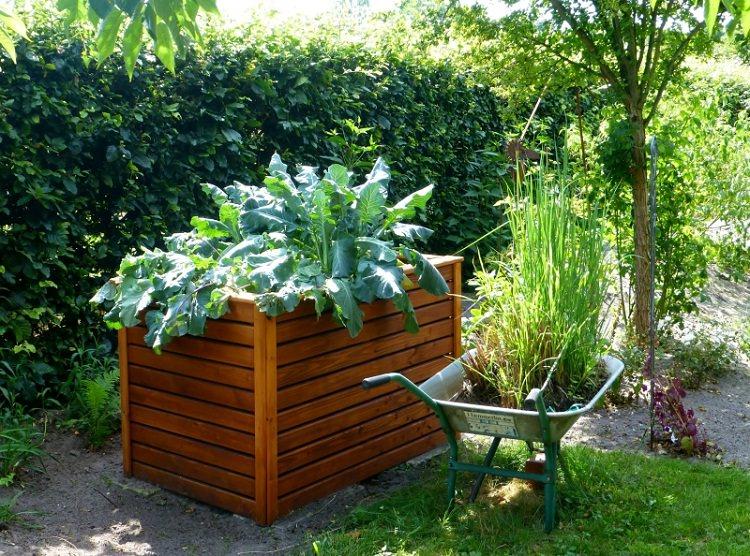
3. Be Creative with Walkways
We’ve all heard about how stripes can hurt us or help us in fashion, but what about having them in the garden? Paving and installing decking diagonally will give the illusion of more space.
Using a diagonal path or an “S” curved path instead of a shorter, a straight walkway will elongate a path making the entire space feel bigger. Stepping stones can also be a good option for a smaller space.
Being creative with walkways can also be more attractive and make a bigger impact. There are some beautiful ways to make your own stepping stones using pre-mix cement.
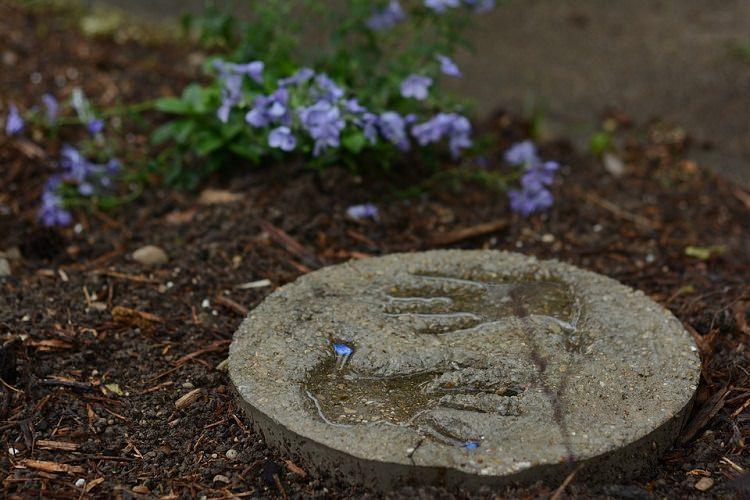
4. Make Use of Multi-Purpose Features
If you want space for entertaining or enjoying your expertly designed garden, you should consider building structural components that can fulfil multiple uses.
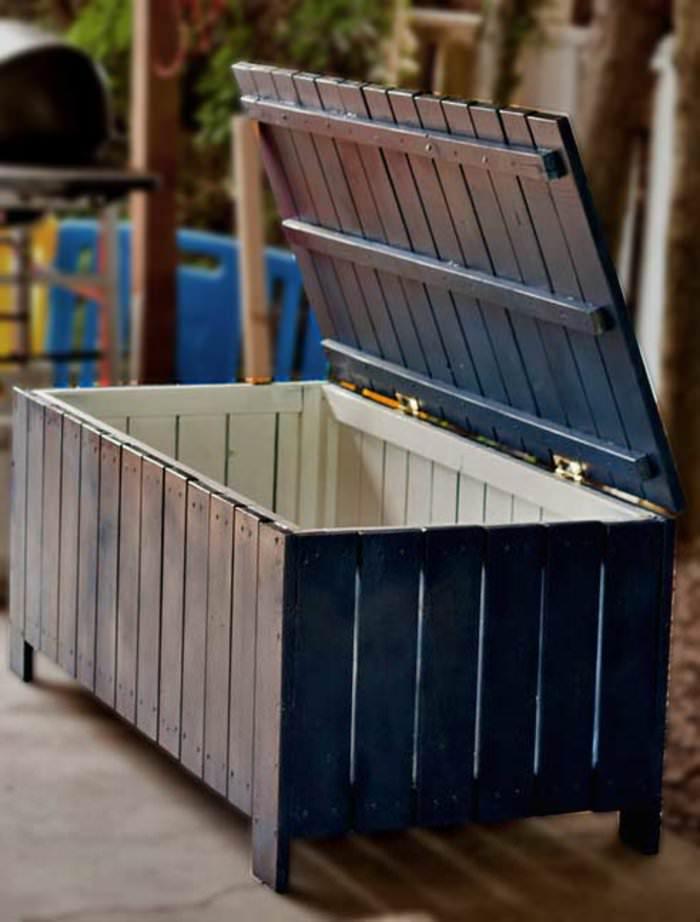
A bench seat can be used as storage with a seat that folds open. Planters built on either side can house ornamental fruit trees which will add shade. You could even add built-in LED lighting.
This bench has five uses and can be built cheaply using pallets and a little bit of know-how. There are plenty of DIY instructions online that could help you put together the perfect piece of furniture for your space.
5. Vertical Gardening to Maximise SpaceYou may have more space than you realise. With a small area, it’s important to consider the often neglected vertical space.
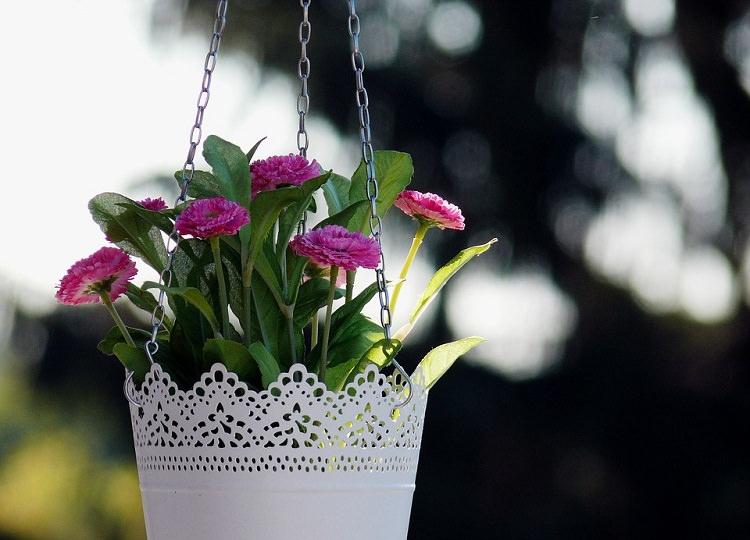
You can take advantage of this space by using hanging planters which look especially pretty with cascading plants, or installing a trellis and training a creeper. Use window boxes to brighten up the outside as well as inside your home.
That’s not to mention the many DIY options. There is plenty of inspiration for how to use an old ladder. You can paint it and use it to hold potted plants.
Anchor a palette to the wall and use it as a planter, or check out all the ways you can use plastic bottles as vertical planters.
Once you begin planning your small yard design and using all the resources and ideas out there, you’ll find it’s not so intimidating. In fact, you’ll be more than ready to get stuck into creating a better space for your small garden!
Even though you may long for a courtyard garden like the ones in magazines or on Pinterest, it can be quite daunting to actually design it, especially if you don’t know where to start.
Luckily there are many resources online to help you turn that neglected small yard into a beautifully designed courtyard garden.
Here are our five garden design ideas to get you started planning your dream courtyard.
1. Use Colours and Repetition to Add Depth
When choosing colours, you want to pick ones that will add depth to the garden. You want to choose cool colours like blues and purples for the border because they blend into each other and create an illusion of a bigger space. Pick warm colours like orange, red and yellow to highlight the space.

Repeating certain colours will also tie the space together and have an impact on your yard. When choosing plants for a garden, make sure you choose ones that will fulfil their purpose in your space.
Yes, choose #plants based on aesthetics. But consider what else space needs. Will you have time to look after high maintenance plants? Do you need shade? Make sure to get something that will have a lot of foliage.
2. Use Levels to Create Cosy Alcoves
You may be thinking, I want my yard to look bigger, not smaller! There are plenty of ways to make a small yard or garden look bigger (some of them listed here) but this should not be your only goal when designing your small garden.
Think about the purposes you want your small yard to fulfil. Do you want the space to be comfortable as well as being full of greenery and colour? Creating terraced areas will allow you to have the best of both worlds.
You can use raised garden beds as individual spaces to take advantage of vertical space and bring your garden closer to eye level (more on that later). Spiral garden beds made using bricks are a functional and efficient way to utilise space.
Also Read: How to make a spiral herb garden

3. Be Creative with Walkways
We’ve all heard about how stripes can hurt us or help us in fashion, but what about having them in the garden? Paving and installing decking diagonally will give the illusion of more space.
Using a diagonal path or an “S” curved path instead of a shorter, a straight walkway will elongate a path making the entire space feel bigger. Stepping stones can also be a good option for a smaller space.
Being creative with walkways can also be more attractive and make a bigger impact. There are some beautiful ways to make your own stepping stones using pre-mix cement.

4. Make Use of Multi-Purpose Features
If you want space for entertaining or enjoying your expertly designed garden, you should consider building structural components that can fulfil multiple uses.

A bench seat can be used as storage with a seat that folds open. Planters built on either side can house ornamental fruit trees which will add shade. You could even add built-in LED lighting.
This bench has five uses and can be built cheaply using pallets and a little bit of know-how. There are plenty of DIY instructions online that could help you put together the perfect piece of furniture for your space.
5. Vertical Gardening to Maximise SpaceYou may have more space than you realise. With a small area, it’s important to consider the often neglected vertical space.

You can take advantage of this space by using hanging planters which look especially pretty with cascading plants, or installing a trellis and training a creeper. Use window boxes to brighten up the outside as well as inside your home.
That’s not to mention the many DIY options. There is plenty of inspiration for how to use an old ladder. You can paint it and use it to hold potted plants.
Anchor a palette to the wall and use it as a planter, or check out all the ways you can use plastic bottles as vertical planters.
Once you begin planning your small yard design and using all the resources and ideas out there, you’ll find it’s not so intimidating. In fact, you’ll be more than ready to get stuck into creating a better space for your small garden!
1
0
文章
Carol
2017年02月20日

Attracting #wildlife into your garden can make it more lively, it will also improve the overall health of your #garden . Here are the 5 ways to do this!
Many people think that all insects and bugs are pests, but this couldn’t be further from the truth. These tiny creatures protect your garden from harmful nuisances, so it’s wise to encourage them into your space. Not only will a lively garden provide hours of entertainment, wildlife will repay your kindness by keeping your garden beautiful and free of harm.
These five simple steps will help to encourage cute critters and soulful songbirds into your garden.
1. Choose your #plants with wildlife in mind
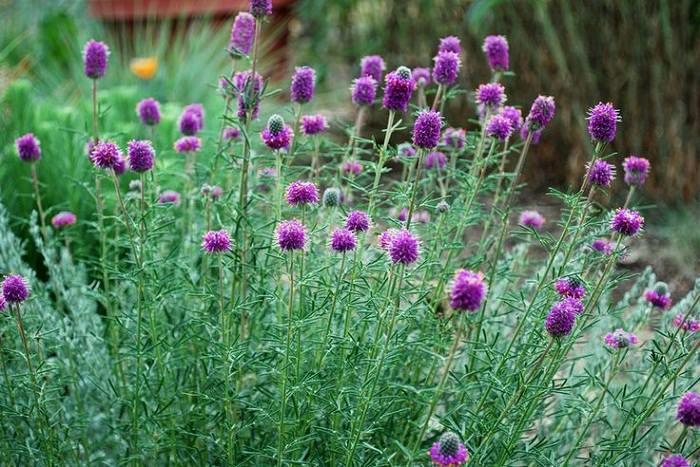
The plants that you introduce to your garden will have a huge effect on how much wildlife you attract, so it’s best to plan ahead when creating or refreshing an outdoor space. Sweet smelling flowers like roses and honeysuckle will entice creatures to come and investigate the appealing scent. Native hedgerows will appeal to local wildlife, so do some research before you plant your parameter borders. If you have space, an oak tree not only looks beautiful but offers a safe haven for large and small animals and critters.
2. Thicken hedges and lengthen grass

Providing cover is the simplest and most effective method for attracting mini beasts; they’ll really appreciate somewhere to shelter from the elements and predators, as well as having somewhere safe to sleep. By allowing your grass to grow longer, and adding density to your hedges you’ll be proving much-needed cover for small creatures. Thick hedges also provide shelter and a safe place to nest for birds, encouraging them to make your garden their home.
Whenever you’re trimming foliage or cutting your lawn, take care and try not to disturb nesting wildlife as much as possible. Once you have created safe havens, it’s important they remain exactly that.
3. Provide food sources

Natural food shortages are a constant danger for birds, so adding a bird feeder to your garden will help local species survive. Make sure you position your feeders out of harm’s way – keep them at least two meters away from cover and be sure that pets or children can’t reach. Once birds start to feed in your garden, keep up your routine as they will become used to it and will time their visits accordingly. Any plant that grows berries will provide an additional natural source of food for our feathered friends.
Small creatures tend to prefer plants that grow in the sun rather than the shade, and anything that grows at the edge of shrubbery or borders is always popular, so bear this in mind when adding to your garden. Insects and bees love flowers and the nectar within, so aim to provide a good variety all year round. Check for the pollinator logo on plant packets to get guidance on what to buy.
4. Create lots of hiding places

A bird box is a great way to attract birds to your garden at any time of the year. By adding these small structures to your garden, you are creating safe spaces for them to shelter from the elements and to raise their young. In return, you’ll benefit from having constant companions throughout the year, and you can even fit a camera inside your box for ultimate bird watching. When fitting your bird box (or multiple bird boxes, if you are hoping to attract more than one species), position it in a quite area at least 1.5 meters above the ground, to ensure that occupants are safe and undisturbed. Be sure to keep the bird box hospitable by cleaning it out, but never disturb it when it’s occupied.
Useful insects, beetles and centipedes appreciate hiding places such as dense foliage and grass piles, which is a great excuse to put off tidying your ‘garden litter’. Delay cutting back your perennials in autumn, and during winter when plants are sparser, arrange piles of logs, stones or bark around your garden to create perfect spaces for hibernation.
5. Add a water feature
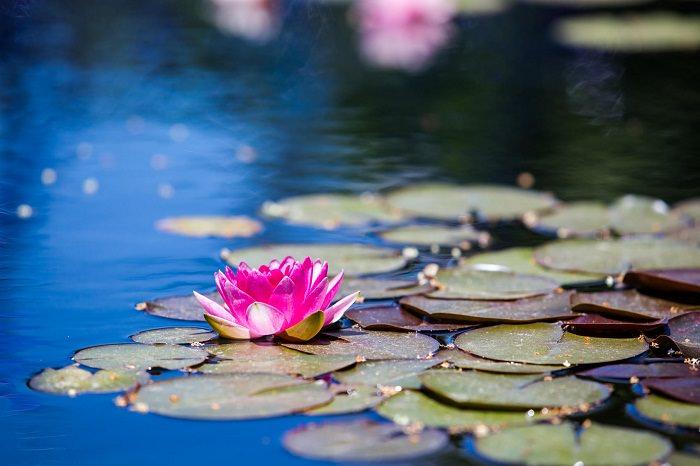
Larger garden wildlife such as frogs and toads are attracted by a pond, and if you can entice them into your garden they will repay you by eliminating slugs and snails; both of which love to feast on your plants. If you don’t have enough space for a pond, consider adding something smaller like a bird bath or water feature. Both of these options will entice beautiful birds and butterflies, as well as critters that love to feed on various types of insects. Not only will your garden be protected, you’ll have lots of colorful creatures to enjoy.
The kinds of wildlife that you’ll attract will differ depending on where you live and the space that you have available. Talk to your local garden center or wildlife association to get advice on how to create a garden that creatures will love as much as you do.
Many people think that all insects and bugs are pests, but this couldn’t be further from the truth. These tiny creatures protect your garden from harmful nuisances, so it’s wise to encourage them into your space. Not only will a lively garden provide hours of entertainment, wildlife will repay your kindness by keeping your garden beautiful and free of harm.
These five simple steps will help to encourage cute critters and soulful songbirds into your garden.
1. Choose your #plants with wildlife in mind

The plants that you introduce to your garden will have a huge effect on how much wildlife you attract, so it’s best to plan ahead when creating or refreshing an outdoor space. Sweet smelling flowers like roses and honeysuckle will entice creatures to come and investigate the appealing scent. Native hedgerows will appeal to local wildlife, so do some research before you plant your parameter borders. If you have space, an oak tree not only looks beautiful but offers a safe haven for large and small animals and critters.
2. Thicken hedges and lengthen grass

Providing cover is the simplest and most effective method for attracting mini beasts; they’ll really appreciate somewhere to shelter from the elements and predators, as well as having somewhere safe to sleep. By allowing your grass to grow longer, and adding density to your hedges you’ll be proving much-needed cover for small creatures. Thick hedges also provide shelter and a safe place to nest for birds, encouraging them to make your garden their home.
Whenever you’re trimming foliage or cutting your lawn, take care and try not to disturb nesting wildlife as much as possible. Once you have created safe havens, it’s important they remain exactly that.
3. Provide food sources

Natural food shortages are a constant danger for birds, so adding a bird feeder to your garden will help local species survive. Make sure you position your feeders out of harm’s way – keep them at least two meters away from cover and be sure that pets or children can’t reach. Once birds start to feed in your garden, keep up your routine as they will become used to it and will time their visits accordingly. Any plant that grows berries will provide an additional natural source of food for our feathered friends.
Small creatures tend to prefer plants that grow in the sun rather than the shade, and anything that grows at the edge of shrubbery or borders is always popular, so bear this in mind when adding to your garden. Insects and bees love flowers and the nectar within, so aim to provide a good variety all year round. Check for the pollinator logo on plant packets to get guidance on what to buy.
4. Create lots of hiding places

A bird box is a great way to attract birds to your garden at any time of the year. By adding these small structures to your garden, you are creating safe spaces for them to shelter from the elements and to raise their young. In return, you’ll benefit from having constant companions throughout the year, and you can even fit a camera inside your box for ultimate bird watching. When fitting your bird box (or multiple bird boxes, if you are hoping to attract more than one species), position it in a quite area at least 1.5 meters above the ground, to ensure that occupants are safe and undisturbed. Be sure to keep the bird box hospitable by cleaning it out, but never disturb it when it’s occupied.
Useful insects, beetles and centipedes appreciate hiding places such as dense foliage and grass piles, which is a great excuse to put off tidying your ‘garden litter’. Delay cutting back your perennials in autumn, and during winter when plants are sparser, arrange piles of logs, stones or bark around your garden to create perfect spaces for hibernation.
5. Add a water feature

Larger garden wildlife such as frogs and toads are attracted by a pond, and if you can entice them into your garden they will repay you by eliminating slugs and snails; both of which love to feast on your plants. If you don’t have enough space for a pond, consider adding something smaller like a bird bath or water feature. Both of these options will entice beautiful birds and butterflies, as well as critters that love to feed on various types of insects. Not only will your garden be protected, you’ll have lots of colorful creatures to enjoy.
The kinds of wildlife that you’ll attract will differ depending on where you live and the space that you have available. Talk to your local garden center or wildlife association to get advice on how to create a garden that creatures will love as much as you do.
0
0
文章
笼岛 みどり
2017年02月18日

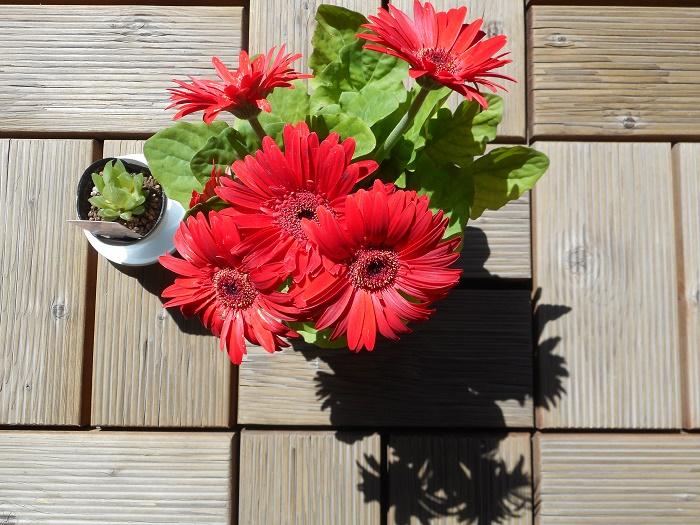
#ガーベラ の基本情報
キク科の多年草で、まっすぐに伸びた花茎から5~10cm程度の花をたくさん咲かせてくれます。切り花として活用できる大輪のものから、「ミニガーベラ」の別称で販売されている3cmほどの改良種まで多彩な品種を誇ります。花は赤、オレンジ、黄色など陽気な色が中心で、春と秋の二度、開花を楽しめるのが特長。比較的育てやすく、冬には一度枯れてしまいますが、寒冷地以外なら放っておけば翌年の春には再び芽を出してくれます。
ガーベラの花言葉
ガーベラは種全体に付けられた花言葉と、花の色ごとの花言葉に分かれています。すべてのガーベラに共通する花言葉は「希望」「前進」。赤のガーベラには「神秘」「燃える神秘の愛」「チャレンジ」、ピンクは「熱愛」「崇高美」「童心に帰る」、黄色は「究極美」「究極愛」「親しみやすい」、オレンジは「神秘」「冒険心」「我慢強い」、白は「希望」「純潔」「律儀」など。どれもガーベラが持つ明るく陽気な雰囲気をとらえており、前向きな言葉になっています。
ガーベラの基本情報科・属キク科ガーベラ属英名Gerbera、Transvaal daisy学名Gerbera原産地南アフリカ出回り時期通年育てやすさ★★☆☆☆
ガーベラの種類・品種
ガーベラは品種改良が盛んで、小輪から大輪まで100種類以上が市場に流通しています。
大輪の赤系では「ティサラ」「バッカラ」などが人気。ピンク系なら鮮やかで強い色味の「ピンクスター」、淡く可憐な「キリアン」と対照的な花色が揃います。オレンジの「ピラー」は他のガーベラとの相性が良く、フラワーアレンジでも重宝されます。純白の花弁と黒い中央部のコントラストが鮮やかな「アベマリア」もポピュラー。八重咲きの「ポンポンガーベラ」も可愛らしい品種です。パステルカラーや、落ち着きある深い色味の品種もあります。
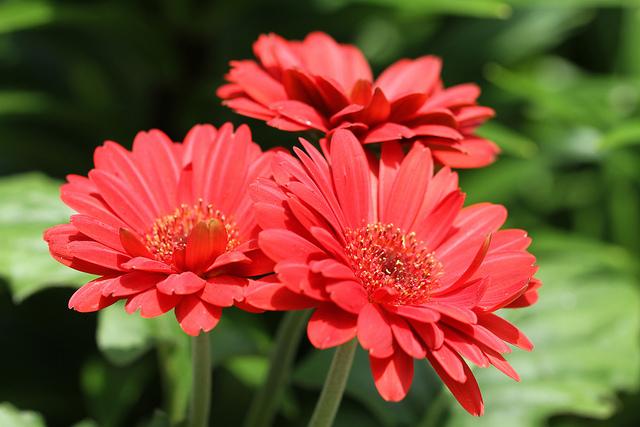
ガーベラの育て方用土
一般的な「花用の土」で問題なく育ちます。調合するなら赤玉土7、腐葉土3。水はけのよい用土を好むので、若干の山砂を加えてもよいでしょう。
種まき
タンポポのような綿毛のついた小さな種をつけます。種は傷みやすいので、確実に咲かせたいなら苗から育てるのがよいでしょう。
#苗の選び方
なるべく新芽やつぼみの多くついた苗を選びます。寒冷地なら、ガーベラの弱点だった耐寒性を高めた新品種「ガルビネア」もおすすめ。
#植え付け
日当たりのよい場所を好みます。根詰まりを起こしやすいので、鉢植えの場合は毎年、春か秋に植え替えましょう。
#水やり
土の表面が乾いたら与えます。根腐れしやすいので、やや少なめに与えるのがポイントです。鉢植えなら梅雨時期は雨のかからない場所に移動させてください。
#追肥
肥料が切れると開花も止まってしまいます。開花時期にはリンを多く含む花用の液肥を10日に1回程度与えてください。
#剪定
花がらと古い葉をこまめに摘み取る以外は剪定を必要としません。鉢植えの場合は用土を取り換える時期に株分けすると花つきがよくなります。
#病害虫
アブラムシとダニ、うどんこ病、白絹病などがあります。いずれも古い葉をこまめに取り除くことで予防します。
#アブラムシ
アブラムシは3月から5月に多く発生する害虫です。新芽や茎、若い葉や葉の裏にくっついて吸汁して株を弱らせます。春から秋に発生するので見つけ次第、駆除しましょう。
#うどんこ病
植物の葉などに粉をまぶしたように白くなるのがうどんこ病です。うどんこ病は5月~6月と9月~10月に発生しやすい病気で、はじめはぽつぽつと白く粉をふいている感じに見えますが、悪化してくると葉の全面が真っ白になっていき、植物全体に蔓延すると茎や果実にも発生し、とても厄介です。早めに対策しましょう。
#白絹病
おもな発生時期は6月から9月で、発生部位は根と茎です。カビ(糸状菌)による伝染病で、菌糸が網のように張り立ち枯れてしまう伝染性の病気です。菌が強いのでかかってしまった部位をそのままにしておいたり、よけてほかの所に置いておいたりしても、病原菌は土の中で越冬してしまうため、春に暖かくなってから活動しはじめてしまいます。発見したらほかの株とは分けて置き、すぐに焼却処分や廃棄処分をするようにしましょう。
ガーベラの育て方 まとめ
・ガーベラは日光が大好き。地植え、鉢植えともなるべく日当たりのよい場所を選びましょう。鉢植えなら冬場は屋内に移動させます。
・水のやり過ぎは禁物。土の表面が乾いたら与えるのが基本です。乾燥に強いので、地上部の枯れてしまう冬場は半月に一度程度でも大丈夫です。
・種は短期間で傷んでしまうので、株分けで増やします。春か秋、古い葉と土をよく落としてから、小さくなりすぎないように分けていきましょう。

ガーベラのその他色々密集する槍のような花つきのよさ
南アフリカで発見された原種・ヤソメニーを交配させて園芸品種となったガーベラが、日本に初めてもたらされたのは明治時代のこと。同じキク科のセンボンヤリより大きく育つことから、オオセンボンヤリ、アフリカセンボンヤリの和名が付けられました。センボンヤリとは文字通り「千本の槍」のようにたくさんの花が林立することから名付けられたもの。花つきのよいガーベラにぴったりの和名です。
夏と冬はおやすみの時期
ガーベラは春と秋に大きく成長・開花し、夏と冬は休眠状態となります。冬は地上部が完全に枯れた状態に。夏も生育がストップします。アフリカ原産ですが暑さには強くないので、半日陰に移動させるか、日除けをかけておきます。「枯れたかな?」と思う状態になっても、春・秋に新芽を出してくれる可能性があるので注意深く見守ってください。
生ける時も水は控えめに
ガーベラに水の与えすぎは禁物。これは切り花として楽しむ時にも共通するポイントです。茎が柔らかく雑菌が入りやすいため、深い花器に生ける時も水は控えめに。切り口が浸る程度、2~3cmの深さがあれば十分です。雑菌の繁殖防止に漂白剤を1~2滴入れておくのも効果的です。
他の育て方の記事はこちら。
1
0
文章
Joss
2017年02月18日

What could smell or look lovelier than a vase full of stunning #roses ? With just a little care, they can last a very long time in a vase.

5 Tips For Cutting Roses:
1. Wait until after 3 p.m. to cut, when their nutrient levels are the highest.
2. Choose buds that have just started to open, only 1/3 to 1/2 of the way through the process. Once a bud has fully opened, it’s too late to cut.
3. Always use a sharp, clean pair of shears. Dull shears crush the stem, and dirty shears can transmit diseases.
4. Don’t remove all of the leaves — keep at least 3 to help feed the bloom. Remove only leaves that will be below the water level of the vase.
5. Once you have finished cutting all the roses for the day, bring them inside to begin the water conditioning and hardening process.

9 Tips For Preserving Roses:
Now that they are cut, the clock starts ticking.
The first threat to a cut rose’s health is the air pocket that entered the stem when you cut the rose outdoors. It will work its way up to the stem, cutting off the nutrient supply and shortening the bloom’s life.
1. Replace that air with water. The easiest way is to fill a bowl with hot tap water, as hot as you can stand to put your hands into.
2. Add any floral preservative you use, plus a few drops of bleach.
3. Place all of the rose stems into the bowl without the buds touching the hot water.
4. Use your shears to cut 1/4 inch off the end of each stem.
5. Leave the roses in the bowl until the water cools to room temperature.
6. Fill your vase with warm water, add a drop or 2 of bleach, and some preservative.
7. Finally add your roses.
8. Whenever the water starts to get cloudy, remove the roses, refill the vase with warm water, add another drop or 2 of bleach, and return the roses to the vase at once.
9. When the blooms begin to show signs of wilting, re-cut about an 1/8 of an inch from the stems and place them in hot water for an hour before returning them to the vase.
This little bit of extra work will vastly extend the vase life of your cut roses. Roses can live for an amazingly long time in a vase if you will help them.

5 Tips For Cutting Roses:
1. Wait until after 3 p.m. to cut, when their nutrient levels are the highest.
2. Choose buds that have just started to open, only 1/3 to 1/2 of the way through the process. Once a bud has fully opened, it’s too late to cut.
3. Always use a sharp, clean pair of shears. Dull shears crush the stem, and dirty shears can transmit diseases.
4. Don’t remove all of the leaves — keep at least 3 to help feed the bloom. Remove only leaves that will be below the water level of the vase.
5. Once you have finished cutting all the roses for the day, bring them inside to begin the water conditioning and hardening process.

9 Tips For Preserving Roses:
Now that they are cut, the clock starts ticking.
The first threat to a cut rose’s health is the air pocket that entered the stem when you cut the rose outdoors. It will work its way up to the stem, cutting off the nutrient supply and shortening the bloom’s life.
1. Replace that air with water. The easiest way is to fill a bowl with hot tap water, as hot as you can stand to put your hands into.
2. Add any floral preservative you use, plus a few drops of bleach.
3. Place all of the rose stems into the bowl without the buds touching the hot water.
4. Use your shears to cut 1/4 inch off the end of each stem.
5. Leave the roses in the bowl until the water cools to room temperature.
6. Fill your vase with warm water, add a drop or 2 of bleach, and some preservative.
7. Finally add your roses.
8. Whenever the water starts to get cloudy, remove the roses, refill the vase with warm water, add another drop or 2 of bleach, and return the roses to the vase at once.
9. When the blooms begin to show signs of wilting, re-cut about an 1/8 of an inch from the stems and place them in hot water for an hour before returning them to the vase.
This little bit of extra work will vastly extend the vase life of your cut roses. Roses can live for an amazingly long time in a vase if you will help them.
1
0
文章
Eyin Thor
2017年02月16日

Want to keep your plants healthy and productive? Here’re the 5 essential ways to do this. Learn more!
One of the most satisfying things to do is to have a healthy and productive garden. In fact, gardening has a lot of benefits. Greenery can keep away negative vibes that ruin your mood.
1. Right soil is what you need
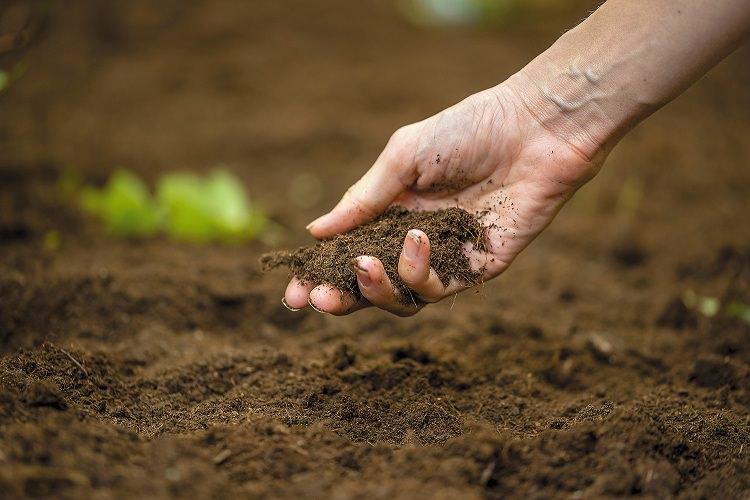
Obviously, you can’t have plants growing healthy and productive if you don’t have right soil. Right? It means, your soil should be fertile, permeable, loamy, and right pH. As good and healthy soil helps build up a strong, productive plant. Also, think again if you want to use chemicals for soil treatments– To have the best and desirable result, better go for organic soil.
2. Choosing the right plants is important
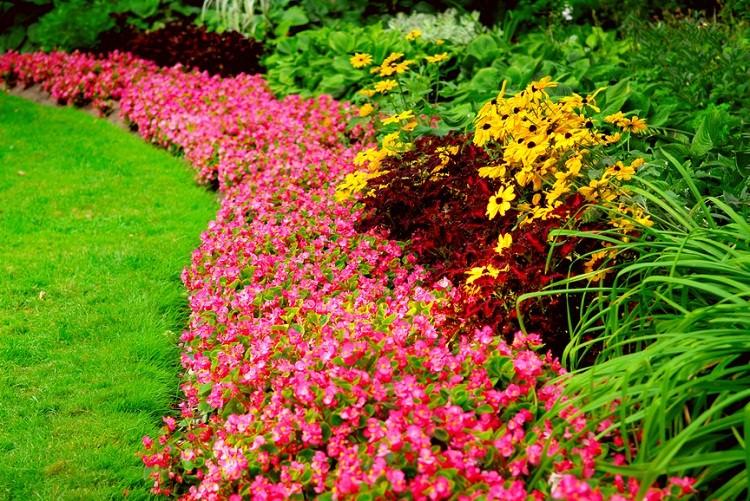
Just because you like a particular plant that doesn’t mean you can also have it growing successfully. You have to choose plants that not only look attractive but also match with the planting conditions you have. Choose plants that will adjust well to any spot in terms of the light, moisture, drainage, soil quality, and dimensions. Also, choose plants that are more resistant pests and diseases to ensure they will grow healthier day by day.
3. Proper spacing is must
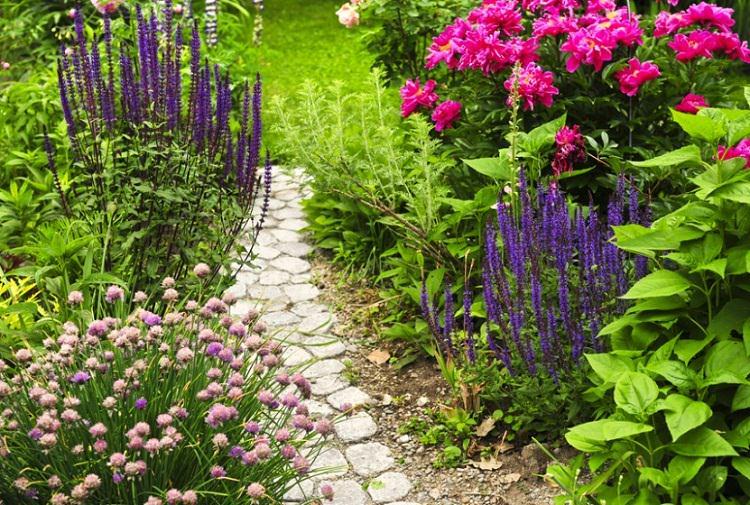
Proper planting space is essential. No doubt it is one of the biggest factors that contributes to the health of the plants. Each plant has its own spacing needs but a few tips like providing proper air circulation around the plants or choosing a large pot (for container gardening) must be considered. Groundcovers and low growing plants should be grouped tightly in beds you don’t walk on. Grouping the plants rightly will also help in reducing the need for weeding and the wastage of water. Moreover, it leads to easier path maintenance. Of course, since plants also need air circulation, you should have ample space between them and the rows. It will also contribute to repel fungal attacks. However, if you have limited space and time, and want the highest returns of your fresh organic plants, you ought to consider planting indeterminate tomatoes, non-hybrid (old) pole beans, and Zucchini in containers.
4. Proper watering must be done
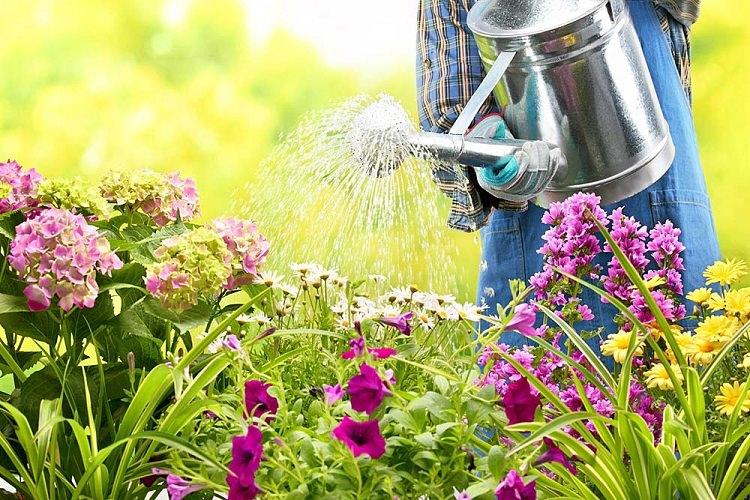
The right watering is one of the most important things you should consider. Just because you have to water the plants it doesn’t mean you’ll have to wet them. Different plants have different watering needs but there is a common approach– Never overwater or underwater your plants. Also, you should know about the right watering time– the best time to water plants is usually in the mornings, since it is the time when the day is cool and without strong winds. So the amount of water lost to evaporation is reduced. But if you water the plants in the evening, it might stay damp overnight, making them more likely to be damaged by fungal and bacterial diseases. Most experts recommend a substantial, infrequent watering for established plants. It is to ensure that the plants will grow in the right way.
5. Planting position is the key
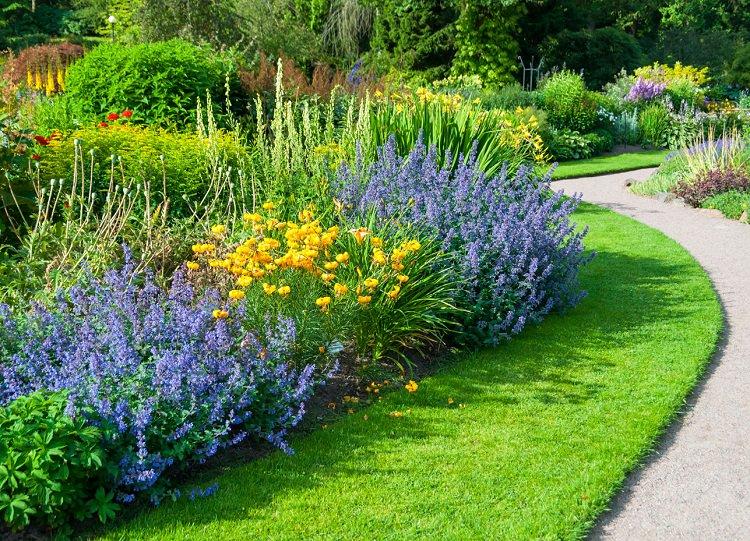
For the best-growing plants, it is important that you care about the planting position. Choose the space with proper sunlight. However, don’t forget about the fact that are the plants too that thrive in shade. Also, the planting position must be well-draining. If you’re growing plants in containers, care about there are sufficient drainage holes in the bottom of the pots.
Whether you realize it or not, gardening is an investment and it brings a significant impact in life!
John has great passion in writing and he writes on various topics. His engaging photos and well-written travel experiences are such a refreshing change from the other blogs in the related field.
One of the most satisfying things to do is to have a healthy and productive garden. In fact, gardening has a lot of benefits. Greenery can keep away negative vibes that ruin your mood.
1. Right soil is what you need

Obviously, you can’t have plants growing healthy and productive if you don’t have right soil. Right? It means, your soil should be fertile, permeable, loamy, and right pH. As good and healthy soil helps build up a strong, productive plant. Also, think again if you want to use chemicals for soil treatments– To have the best and desirable result, better go for organic soil.
2. Choosing the right plants is important

Just because you like a particular plant that doesn’t mean you can also have it growing successfully. You have to choose plants that not only look attractive but also match with the planting conditions you have. Choose plants that will adjust well to any spot in terms of the light, moisture, drainage, soil quality, and dimensions. Also, choose plants that are more resistant pests and diseases to ensure they will grow healthier day by day.
3. Proper spacing is must

Proper planting space is essential. No doubt it is one of the biggest factors that contributes to the health of the plants. Each plant has its own spacing needs but a few tips like providing proper air circulation around the plants or choosing a large pot (for container gardening) must be considered. Groundcovers and low growing plants should be grouped tightly in beds you don’t walk on. Grouping the plants rightly will also help in reducing the need for weeding and the wastage of water. Moreover, it leads to easier path maintenance. Of course, since plants also need air circulation, you should have ample space between them and the rows. It will also contribute to repel fungal attacks. However, if you have limited space and time, and want the highest returns of your fresh organic plants, you ought to consider planting indeterminate tomatoes, non-hybrid (old) pole beans, and Zucchini in containers.
4. Proper watering must be done

The right watering is one of the most important things you should consider. Just because you have to water the plants it doesn’t mean you’ll have to wet them. Different plants have different watering needs but there is a common approach– Never overwater or underwater your plants. Also, you should know about the right watering time– the best time to water plants is usually in the mornings, since it is the time when the day is cool and without strong winds. So the amount of water lost to evaporation is reduced. But if you water the plants in the evening, it might stay damp overnight, making them more likely to be damaged by fungal and bacterial diseases. Most experts recommend a substantial, infrequent watering for established plants. It is to ensure that the plants will grow in the right way.
5. Planting position is the key

For the best-growing plants, it is important that you care about the planting position. Choose the space with proper sunlight. However, don’t forget about the fact that are the plants too that thrive in shade. Also, the planting position must be well-draining. If you’re growing plants in containers, care about there are sufficient drainage holes in the bottom of the pots.
Whether you realize it or not, gardening is an investment and it brings a significant impact in life!
John has great passion in writing and he writes on various topics. His engaging photos and well-written travel experiences are such a refreshing change from the other blogs in the related field.
0
0



